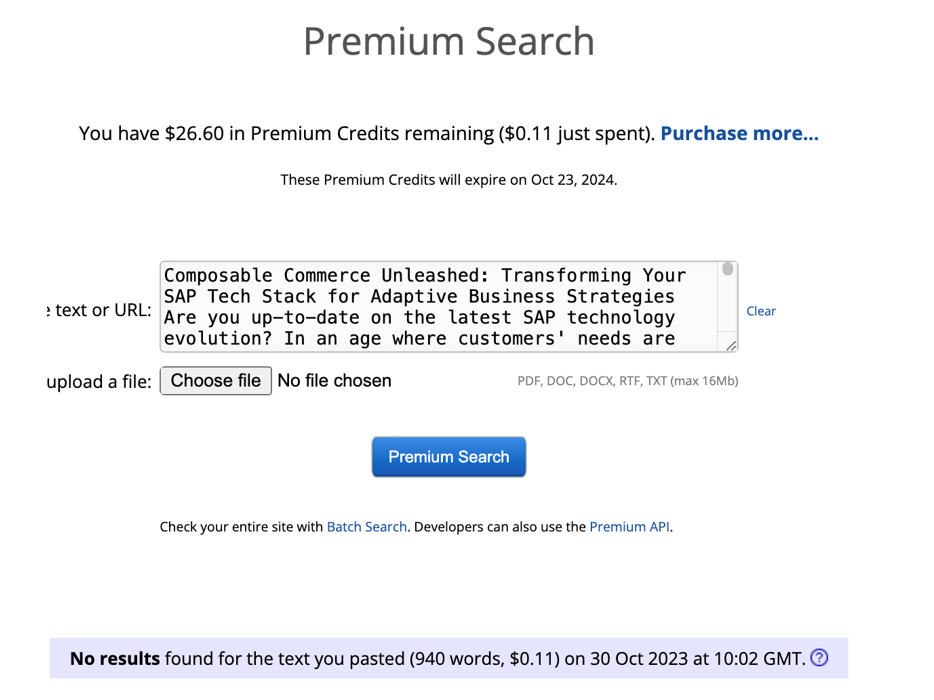Are you up-to-date on the latest SAP technology evolution? In an age where customers’ needs are rapidly shifting and competition is becoming more sophisticated, one strategy for business success stands out: composable commerce.
By leveraging your existing investments in SAP upgrades while building new tools to meet customer demands at any moment, this approach enables proactive strategies that promise steady financial returns. Today, we’re taking a closer look at how composable commerce can give you complete control of your SAP tech stack for adaptive future planning. Fasten your seatbelt – it’s time to explore the potential of this revolutionary strategy.
What is Composable Commerce and Why it’s Transforming Your SAP Tech Stack
The commerce landscape changes rapidly, and businesses must adapt to stay competitive. One innovation that is transforming the tech stack of organizations is composable commerce. Simply put, composable commerce is an approach that enables businesses to build their commerce stacks from a range of loosely coupled, modular applications and services. This approach allows companies to easily add and remove elements of their tech stack as their needs change while also reducing the risk of vendor lock-in.
For SAP users, embracing composable commerce means unlocking new flexibility and agility when building and managing their commerce applications. By adopting a composable approach, businesses can avoid the headache of managing legacy software and instead focus on creating a lean, adaptable, and extensible commerce stack. Composable commerce SAP applications are built with a service-oriented architecture, meaning they can be easily integrated with other systems and modified to meet evolving business needs.
How to Leverage Composable Commerce for Adaptive Business Strategies
Composable commerce provides businesses with a competitive edge by enabling them to quickly adapt to changing customer demands and market trends. With the ability to easily add or remove components from their tech stack, businesses can stay agile in a constantly evolving marketplace. It is crucial for SAP users, as it allows for seamless integration of new technology solutions while leveraging existing investments.
But what does this mean in practice? For example, suppose your business decides to expand into a new market or launch a new product line. In that case, you can use composable commerce to quickly add the necessary functionality to support these initiatives without overhauling your tech stack completely. This flexibility allows businesses to respond rapidly and efficiently to customer needs while minimizing risk and cost.
Critical Benefits of Composable Commerce in the SAP Context
As businesses continue to navigate the ever-changing e-commerce landscape, composable commerce has emerged as a powerful solution to the challenges companies face. In the SAP context, composable commerce allows for integrating multiple systems and technologies to create a flexible, customizable platform that meets the unique needs of a business.
At its core, composable commerce enables companies to quickly adapt to changing market conditions, scale their operations more efficiently, and ultimately deliver a better customer experience. With the ability to layer and replace components as needed, composable commerce offers businesses greater flexibility and agility in a rapidly evolving industry. By embracing this approach, SAP users can streamline their operations, reduce costs, and drive growth in the years ahead.
Best Practices and Challenges When Implementing Composable Commerce
While composable commerce offers many benefits, it is essential to note that there are also challenges that businesses may face when implementing this approach. One key challenge is ensuring proper integration and compatibility between different components of the tech stack. It requires careful planning and coordination between teams to ensure a seamless transition.
In addition, businesses must also consider factors such as data security and privacy when leveraging composable commerce. With multiple systems and technologies being integrated, it is crucial to have proper measures in place to protect sensitive customer information.
To successfully implement composable commerce in the SAP context, businesses should follow certain best practices. These include conducting thorough research on available solutions, evaluating their current tech stack, identifying areas for improvement, and involving all relevant stakeholders in decision-making processes.
Achieving Maximum ROI Through Composable Commerce
By embracing composable commerce and transforming their SAP tech stack, businesses can achieve maximum ROI through increased agility, scalability, and cost savings. With the ability to quickly adapt to changing market conditions, companies can stay ahead of the competition and deliver a seamless customer experience that drives revenue growth.
Furthermore, with a modular approach to building their tech stack, businesses can avoid vendor lock-in and reduce the risk of costly software upgrades. It allows for more efficient use of resources and better budget allocation towards innovation and growth initiatives.
What’s Next For SAP Technology And The Future Of Composable Commerce
As the landscape of commerce continues to evolve, so too will the technology used to power it. In the SAP context, we expect to see continued innovation and advancements in composable commerce solutions. It will allow businesses to streamline their operations further and deliver even more personalized customer experiences.
Additionally, with the rise of technologies such as artificial intelligence and machine learning, we may see these capabilities integrated into composable commerce solutions to enhance business processes and decision-making further. Finally, as businesses prioritize flexibility and agility, we can expect composable commerce to become a standard approach in building and managing tech stacks for all types of enterprises.
By embracing this approach now, SAP users can future-proof their operations and stay ahead of the game in an ever-changing marketplace. So, businesses must stay informed about the latest advancements in composable commerce and be ready to adapt and evolve with these changes.


